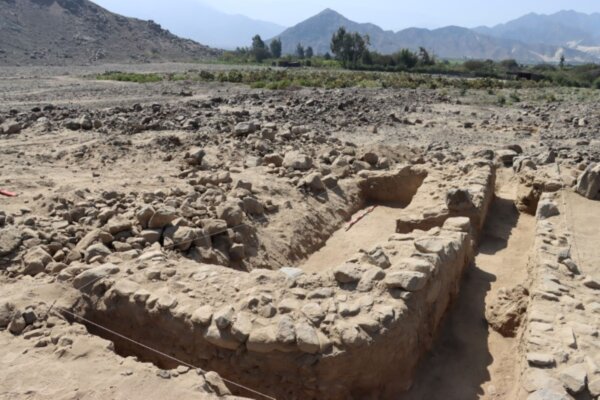
Archaeologists in northern Peru have uncovered four human remains believed to be over 3,000 years old in a barren land area that likely housed a ceremonial temple dedicated to the ancient local gods.
The burial bundles were found nestled between mud and stone walls near a valley in the dry, coastal Viru Province in La Libertad region, which has been home to numerous ancient cultures throughout history.
Feren Castillo, an archaeologist from the National University of Trujillo leading the research project in the area, estimated the age of the remains and walls to be between 3,100 and 3,800 years old.
“This discovery gives us insight into the cultural evolution of this region,” Castillo stated, noting that the presence of four remains in such close proximity suggests there may be more buried in the area.
“It also highlights the significance of the space. People have long sought to be buried in temples as they hold great sacred value,” added Castillo.
Peru, known for its rich archaeological sites spanning various periods, was once home to the Inca empire over 500 years ago, which ruled over a vast territory in South America until the arrival of Spanish conquistadors.
Last month, researchers in La Libertad announced the discovery of 11 skeletons belonging to “high-class” individuals dating back 800 years. These were found near Chan Chan, the largest mud citadel in the Americas, constructed by the Chimu culture that once governed parts of Peru’s northern coast.





